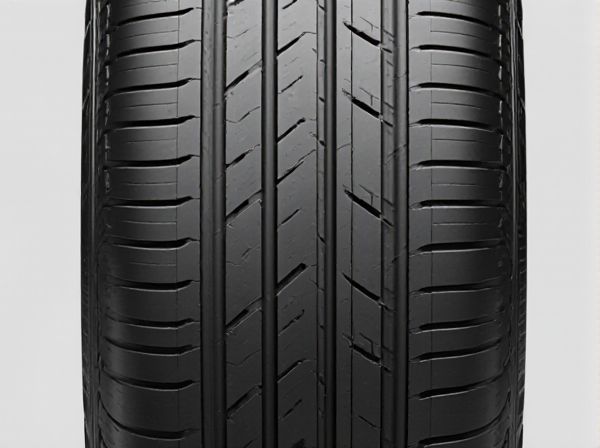
Photo illustration: Directional vs Asymmetrical Tread
Directional tread patterns enhance vehicle traction and control by channeling water away from the tire's center, reducing hydroplaning risks on wet roads. Asymmetrical tread designs combine different tread patterns on the inner and outer sides to optimize handling, cornering stability, and wet performance. Choosing the right tread type affects Your driving safety and performance based on typical weather and road conditions.
Table of Comparison
| Feature | Directional Tread | Asymmetrical Tread |
|---|---|---|
| Tread Pattern | V-shaped, designed for one rotational direction | Different patterns on inner and outer halves for balanced performance |
| Performance | Excellent water evacuation, improved hydroplaning resistance | Optimized grip in corners with strong wet and dry traction |
| Rotation | Must be mounted to rotate in a specific direction | Can be rotated in multiple patterns to extend tire life |
| Noise Level | Typically quieter at high speeds | Generally moderate noise, optimized for comfort |
| Usage | Best for wet weather driving and high-speed stability | Ideal for all-season use, combining performance and durability |
Introduction to Tread Patterns
Directional tread patterns feature V-shaped grooves that channel water efficiently to enhance wet traction and reduce hydroplaning, making them ideal for high-speed driving. Asymmetrical tread patterns combine different tread designs on the inner and outer sections to balance wet grip, dry handling, and cornering performance, offering versatility for varied driving conditions. Both tread types optimize tire contact and stability but serve distinct performance needs based on driving style and road conditions.
What is Directional Tread?
Directional tread is a tire design featuring a V-shaped or arrow-like pattern that optimizes water evacuation to enhance wet traction and reduce hydroplaning risk. These treads require proper mounting in a specific rotational direction to maintain performance and safety. Ideal for high-speed driving and wet conditions, directional treads improve grip and stability by channeling water away efficiently.
Key Characteristics of Directional Tread
Directional tread features a V-shaped pattern designed to enhance water evacuation and improve wet traction, significantly reducing hydroplaning risks on wet roads. The tread design also provides superior high-speed stability and better handling performance, making it ideal for performance vehicles and all-season tires. Its unidirectional rotation requires proper mounting to maximize efficiency and ensure even wear.
What is Asymmetrical Tread?
Asymmetrical tread patterns combine different designs on the inner and outer sections of a tire to optimize grip, handling, and water dispersion. The inner side typically features smaller grooves for enhanced wet traction, while the outer side has larger shoulder blocks for improved cornering stability. This design allows tires to perform well in diverse driving conditions, balancing comfort and performance effectively.
Key Features of Asymmetrical Tread
Asymmetrical tread patterns combine different designs on the inner and outer sections of the tire to optimize traction, handling, and water dispersion. The outer tread features larger, stiffer blocks for enhanced cornering and grip, while the inner tread incorporates smaller grooves and sipes to improve wet performance and reduce hydroplaning. This specialized design delivers a balanced driving experience with superior stability and responsiveness in diverse road conditions.
Performance Comparison: Directional vs Asymmetrical
Directional tire tread designs offer enhanced water evacuation and improved stability at high speeds, making them ideal for wet road performance and precise handling. Asymmetrical treads provide a balanced combination of dry grip, cornering traction, and even wear by featuring varied patterns on the inner and outer edges of the tire. Performance comparison indicates that directional treads excel in wet conditions and straight-line stability, while asymmetrical treads deliver superior versatility and responsiveness across a range of driving scenarios.
Handling and Traction in Different Conditions
Directional tread patterns enhance handling and traction by efficiently channeling water away, reducing hydroplaning on wet surfaces and providing superior grip during high-speed driving. Asymmetrical tread designs optimize traction by combining varied tread blocks and grooves, delivering enhanced dry cornering stability and improved performance on both wet and dry roads. The choice between directional and asymmetrical treads depends on specific driving conditions, with directional excels in wet traction and asymmetrical offering balanced performance across diverse environments.
Wear, Durability, and Maintenance
Directional tread patterns offer enhanced wear resistance by promoting even tire contact and better water evacuation, leading to improved durability and consistent performance. Asymmetrical treads combine varied tread designs across the tire surface to optimize wear distribution and traction on different road conditions, which can extend tire lifespan with balanced maintenance. Proper rotation schedules are essential for both types to prevent uneven wear, ensuring maximum tire durability and reducing maintenance costs over time.
Choosing the Right Tread for Your Vehicle
Directional tread patterns offer superior water evacuation and improved high-speed stability, making them ideal for wet conditions and performance vehicles. Asymmetrical treads combine varied tread blocks to enhance cornering grip and provide a balance between wet and dry traction, suited for versatile driving needs. Choosing the right tread depends on your driving habits, climate conditions, and vehicle type to maximize safety and performance.
Final Thoughts: Which Tread Pattern is Best?
Directional tread patterns excel in hydroplaning resistance and high-speed stability due to their V-shaped grooves that channel water efficiently, making them ideal for wet conditions. Asymmetrical tread patterns offer a balanced performance with enhanced cornering grip, even wear, and versatility across different road surfaces, often favored for everyday driving and mixed weather. Choosing the best tread pattern depends on specific driving habits and climate conditions, with directional suited for consistent wet-weather performance and asymmetrical preferred for all-around versatility and dry handling.
 caratoz.com
caratoz.com